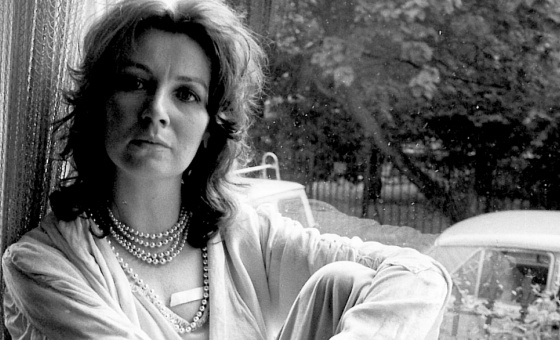This is the last article you can read this month
You can read more article this month
You can read more articles this month
Sorry your limit is up for this month
Reset on:
Please help support the Morning Star by subscribing here
Steve Lacy The Sun, Saxophone Special + Avignon and After Hooky (all Emanem)
WHEN he was playing alongside the great Thelonious Monk in 1960, the soprano saxophonist Steve Lacy would write down some of the pianist’s most pregnant dictums.
One he transcribed was: “A note can be small as a pin or as big as the world, it depends upon your imagination.”
Powerful words these, as revelant to Lacy’s work as they were to that of Monk.
Notes big and small, and imagination huge; such was certainly the message of Lacy, born Steven Norman Lackritz in New York City in 1934, who began his musical life in the 1950s as a Dixielander, inspired by playing with some of the music’s most brilliant virtuosi like the New Orleans trumpeter Henry “Red” Allen and the rasping Chicago clarinettist Pee Wee Russell, before moving through genres and eventually finding the avant garde with his participation on the debut album of pianist Cecil Taylor in 1965 Jazz Advance.
Lacy’s discography is enormous: over 130 Lacy-led albums, many of them solo soprano saxophone, 16 as part of the duo with his longtime piano confrere Mal Waldron and dozens of others as a sideman with small groups and big bands like the Globe Unity Orchestra.
But some of his most original and divergently brilliant albums within his canon were cut with the London label Emanem during his long tenure in Europe between 1965 and 2002, with producer and sound engineer Martin Davidson at the helm, and sometimes featuring pathbreaking British improvisers.
Take Saxophone Special + for example, recorded in 1973-4 with members of the pioneering free improvising Spontaneous Music Ensemble, including London drummer John Stevens, Sheffield guitarist Derek Bailey, Bristolian tenorist Evan parker and York-born altoist Trevor Watts.
Two Americans, Lacy’s soprano sax player Steve Potts and the New Hampshire bassist Kent Carter, were also present, with synthesiser man Michel Waisvisz. In nearly 80 minutes of eclectic delights, Stevens is all over his drums on the first four tracks recorded at Oxford Street’s 100 Club with Lacy and Potts blowing a minor tempest.
Bailey’s unique chirruping guitar is at the centre of Flakes while the sopranos soar again on the track dedicated to Black Panther Huey Newton, Revolutionary Suicide.
The last six tracks are gifted with the superb acoustics of the Wigmore Hall plus Watts and Parker and Waisvizs’s ghostly electronics.
The four saxophones intertwine their notes like joyous birdsong, particularly in Dreams, and Parker plays a rare baritone horn in the swirling Swishes.
There are four soprano saxophones in colloquy all throughout the exquisite Sops, and within the improvising of the two tracks of Snaps there are some compelling moments of sheer melody and the rasping undertow of Parker’s tenor.
Davidson described Lacy’s 1967-8 album The Sun as his “most polemical” work, radiating a passionate opposition to war, born out of the mass protests against the US war in Vietnam.
Lacy and his cellist and vocalist wife Irene Aebi were inspired by 2,500-year-old words of the Chinese poet Lao Tzu and these were meshed with free improvisation and the electronics of synthesiser pioneer Richard Teitelbaum, a wild amalgam of the ancient and the modern telling the ages-old story of war’s oppression and absurdity.
War’s horror blasts through the 12 minutes of Chinese Food where Lacy’s winding notes and Lao Tzu’s lines like “Even the finest arms are an instrument of evil, spread like a plague” tell the story of the US food of hatred in Vietnam — a story continued in the 1973 Zurich recording of The Woe, where Lacy is joined by Potts and US drummer Oliver Johnson.
Avignon and After (recorded in Avignon in 1972 and Berlin in 1974) and Hooky (recorded in a Montreal church in 1976) are both albums of solo soprano saxophone, although the astonishing track Stations on the first CD was dedicated to Monk and was recorded with a woman singing indistinctly on the radio in the background as Lacy breaks suddenly into the theme of I Feel Pretty from West Side Story.
Lacy wrote Original New Duck for the great Ellington tenorist Ben Webster and The Dumps was inspired by the early jazz achievement of Jelly Roll Morton, which tells his listeners how deeply Lacy delved into the tradition to find his music.
These solo albums are testimony to both Lacy’s sheer artistic inventiveness and the same jazz audacity that provoked Anthony Braxton to record the first solo saxophone album For Alto in 1968.
As you listen to Lacy alone you are hearing a birdman with his individual sounds like a pin or like an entire world, and as you take them in as he blew them in France, Germany or Canada it makes you realise (thanks to Monk) that there really is no difference, and all is expressed and blown out of mind and body by peace and beauty.
Thanks again, Steve Lacy, gone from us since 2004.









